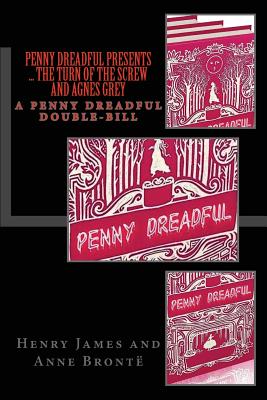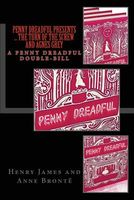- Welcome to FictionDB, Guest
- | My Account
- | Help

Penny Dreadful Presents ... the Turn of the Screw and Agnes Grey — Henry James
A ‘grim governess' two-pack from either side of the Victorian Atlantic ...
‘The Turn of the Screw' by Henry James
“The story had held us, round the fire, sufficiently breathless, but except the obvious remark that it was gruesome, as, on Christmas Eve in an old house, a strange tale should essentially be, I remember no comment uttered till somebody happened to say that it was the only case he had met in which such a visitation had fallen on a child.”
First published in the U.S. in the anthology collection 'The Two Magics' in 1898, Henry James's novella 'The Turn of the Screw' has been enthralling readers for over a century and shows no sign of losing popularity as new generations continue to discover this disturbing masterpiece.
The novella's anonymous narrator is a young woman, a parson's daughter, who is engaged as governess to two seemingly innocent children at a remote English country house. What initially seems an idyllic soon turns nightmarish, as she becomes convinced that the children are consorting with a pair of malevolent spirits. These are the ghosts of former employees at Bly: a valet and a previous governess. In life, scandalously, the two of them had been discharged as illicit lovers, and their spectral visitations with the children hint at Satanism and possible sexual abuse.
The book amply fulfills its pledge, laid down in the first few pages, that nothing can touch it in terms of sheer “dreadful -- dreadfulness.”
‘Agnes Grey' by Anne Bronte
Few associate the term ‘penny dreadful' with the Bronte sisters but a case can be made for Acton Bell anticipating the genre with her under-rated Victorian chiller. The fear conjured in Agnes Grey is psychological but the implied horror is no less palpable for its understatement. It is the fear of what people are capable of doing to other people.
The tight, highly suspenseful novella is largely based on Anne Bronte's own experiences as a governess for five years. Like her sister Charlotte's novel ‘Jane Eyre', it addresses what the precarious position of governess entailed and how it affected a young woman. The choice of central character allows Anne to deal with issues of oppression and abuse of women and governesses, isolation and ideas of empathy.
Events representative of cruel treatment of governesses and of women recur throughout the story. Brontë depicts scenes of cruelty towards animals, as well as degrading treatment of Agnes. Parallels have been drawn between the oppression of these two groups -- animals and females -- that are "beneath" the upper class human male. To Anne, the treatment of animals reflected on the character of the person.
This theme of oppression provided social commentary, likely based on Anne's experiences. Twenty years after its publication Lady Amberly commented that "I should like to give it to every family with a governess and shall read it through again when I have a governess to remind me to be human."
The Irish novelist George Moore praised Agnes Grey as "the most perfect prose narrative in English letters," and went so far as to compare Anne's prose to that of Jane Austen. Modern critics have made more subdued claims admiring Agnes Grey with a less overt praise of Brontë's work than Moore.

